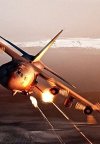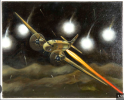brcase
En-Route
A Question I like to ask when doing flight reviews is...
We start teaching Inadvertant Spin Avoidance almost from Lesson #1. Why or What Factors lead pilot to continue to have Stall Spin Accidents?
There obviously are a number of factors, but pivotal altitude is one of them, and often we don't even talk about it until we start teaching 8 on Pylons for the Commerical Check Ride.
And even then a I bet a lot of commercial pilots still haven't made the connection between pivotal altitude and low altitude spins.
Here is Quote from a article I was reading today...
When you are low, you get a sense of ground rush and might try to slow down.
(Credit to Garret Willat)
The take away, is what everyone knows, especially below pivotal altitude pilot need to be especially aware of maintaining Airspeed and Coordinated turns, as the desire to inadvertently Slow Down and Skid a Turn is much higher than at higher altitudes. But what not all pilots may yet appreciate is that below the pivotal attitude we should also be more alert for indications of a stall and prepared to recover at the 1st indication of a stall, especially while performing activities that might be distracting, emergency procedures for example. Also the pivotal altitude becomes higher the faster your ground speed i.e.. Downwind Turns.
Brian
CFIIG/ASEL
We start teaching Inadvertant Spin Avoidance almost from Lesson #1. Why or What Factors lead pilot to continue to have Stall Spin Accidents?
There obviously are a number of factors, but pivotal altitude is one of them, and often we don't even talk about it until we start teaching 8 on Pylons for the Commerical Check Ride.
And even then a I bet a lot of commercial pilots still haven't made the connection between pivotal altitude and low altitude spins.
Here is Quote from a article I was reading today...
Pivotal altitude.
pilots do this maneuver for their (commercial) check rides, and it is to understand the height and speed combination as you sight down your wingtip as it should look like it is staying on one point, the wingtip not tracking forward or aft of that ground reference point. We spend all day watching our wing going backward (when turning). Once we get below pivotal altitude, the wing looks like it is going forward. This can lead to wanting to apply more rudder into the turn. For a more in-depth explanation of pivotal altitude check out the Airplane Flying Handbook.When you are low, you get a sense of ground rush and might try to slow down.
(Credit to Garret Willat)
The take away, is what everyone knows, especially below pivotal altitude pilot need to be especially aware of maintaining Airspeed and Coordinated turns, as the desire to inadvertently Slow Down and Skid a Turn is much higher than at higher altitudes. But what not all pilots may yet appreciate is that below the pivotal attitude we should also be more alert for indications of a stall and prepared to recover at the 1st indication of a stall, especially while performing activities that might be distracting, emergency procedures for example. Also the pivotal altitude becomes higher the faster your ground speed i.e.. Downwind Turns.
Brian
CFIIG/ASEL


